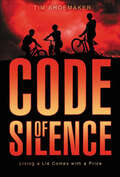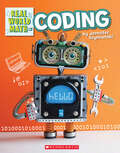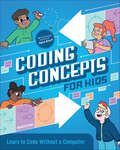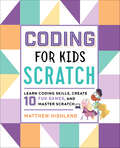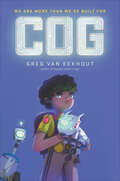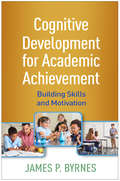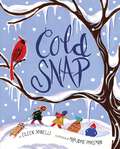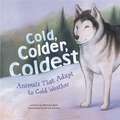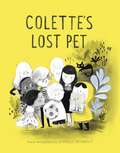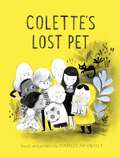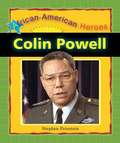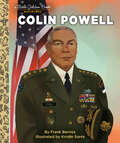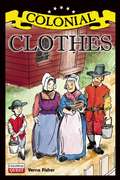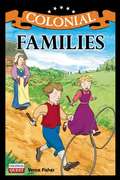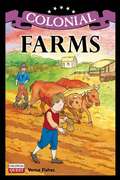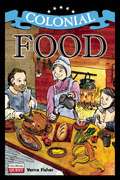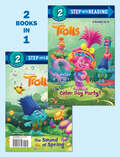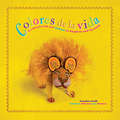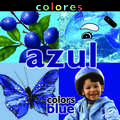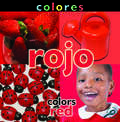- Table View
- List View
Code of Silence: Living a Lie Comes with a Price (The Code of Silence Novels #3)
by Tim ShoemakerTelling the Truth Could Get Them Killed. Remaining Silent Could Be Worse. When Cooper, Hiro, and Gordy witness a robbery that leaves a man in a coma, they find themselves tangled in a web of mystery and deceit that threatens their lives. After being seen by the criminals—who may also be cops—Cooper makes everyone promise never to reveal what they have seen. Telling the truth could kill them. But remaining silent means an innocent man takes the fall, and a friend never receives justice. Is there ever a time to lie? And what happens when the truth is dangerous? The three friends, trapped in a code of silence, must face the consequences of choosing right or wrong when both options have their price.
Coding (Real World Math): Puzzles, Games, Challenges, And Computer Coding Concepts For The Problem Solver In You
by Jennifer SzymanskiFollow the robot and get ready to use math to learn to code!1 robot … 2 robots … 3! Programmers use math every day to write code that helps computers and robots do their jobs. Join a real coder to learn about STEPS of a program, PATTERNS in code, IF/THEN statements, and more. Then test your math skills with special You Can Do It challenges.This brand-new series demonstrates how math skills can be applied to high-interest topics and careers in Coding, Building, Tracking Animals, and Space Exploration. The K-2 math concepts include counting 1-100 with basic addition and subtraction, using the power of 10, measuring, and simple geometry. Real world scientists, architects, programmers, and mathematicians model hands-on, from-the-field experiences in a way that will make children excited to use and expand their math skills!
Coding Concepts for Kids: Learn to Code Without a Computer
by Randy LynnCoding for kids without a computer—an offline skill-building book for ages 5 to 7Coding helps kids develop analytical thinking, problem-solving abilities, and beyond! In this exciting guide to coding for kids, your child will discover the core concepts of coding through colorful games and activities—without using a computer.These fun challenges can be done right inside the book or with everyday objects to help kids practice the same skills coders use, like writing clear instructions, recognizing patterns, and working efficiently. There's even a place for your beginner to invent their own codes!This coding for kids book features:Coding fundamentals—Practice algorithms, loops, conditionals, optimization, debugging, and variables with games that help kids think like a computer programmer.Meet the coder crew—Explore coding for kids with a whole cast of characters, including Al the helper, Pixel the creative expert, Lo the problem-solver, Bug the pattern-spotter, and their robot dog Spot the Bot!On and off the page—Sharpen skills with fun on-the-page puzzles and off-the-page activities that give kids a chance to practice in different ways.Set your little ones up for success with coding for kids that only requires a pencil, paper, and their imagination.
Coding for Kids: Learn Coding Skills, Create 10 Fun Games, and Master Scratch
by Matthew HighlandLearn to code awesome games with Scratch—a fun starter guide for kids 6 to 10Explore basic coding concepts and skills and start creating your own games right away! Coding for Kids: Scratch is a complete guide that makes mastering the Scratch programming language fun and easy for kids.From sprites and code blocks to scripts and scorekeeping, Coding for Kids: Scratch helps you discover everything you need to know to create 10 amazing games that you and your friends can play. Watch your confidence grow with step-by-step instructions and clear directions that keep things simple—even as the games you're making get more challenging. Game on!Coding for Kids: Scratch includes:Coding for kids—Learn Scratch terms and concepts, then use them to build games you can start playing immediately.Create 10 games—Cake Clicker, Dino Hunt, Crystal Keeper, and more—code, play, and share 10 cool games.Master Scratch—Simple directions, full-color screenshots, and projects that get more difficult make practicing Scratch a breeze.Make coding for kids fun and games with Coding for Kids: Scratch.
Cog
by Greg van EekhoutFive robots. One unforgettable journey. Their programming will never be the same. Wall-E meets The Wild Robot in this middle grade instant classic about five robots on a mission to rescue their inventor from the corporation that controls them all. Cog looks like a normal twelve-year-old boy. But his name is short for “cognitive development,” and he was built to learn. But after an accident leaves him damaged, Cog wakes up in an unknown lab—and Gina, the scientist who created and cared for him, is nowhere to be found. Surrounded by scientists who want to study him and remove his brain, Cog recruits four robot accomplices for a mission to find her.Cog, ADA, Proto, Trashbot, and Car’s journey will likely involve much cognitive development in the form of mistakes, but Cog is willing to risk everything to find his way back to Gina.In this charming stand-alone adventure, Greg van Eekhout breathes life and wisdom into an unforgettable character and crafts a story sure to earn its place among beloved classics like Katherine Applegate’s The One and Only Ivan.
Cognitive Development for Academic Achievement: Building Skills and Motivation
by James P. ByrnesThis integrative text spotlights what educators need to know about children's cognitive development across grade levels (PreK-12) and content areas. The book provides a concise introduction to developmental neuroscience and theories of learning. Chapters on general cognitive abilities probe such crucial questions as what children are capable of remembering at different ages, what explains differences in effort and persistence, and how intelligence and aptitudes relate to learning. Domain-specific chapters focus on the development of key academic skills in reading, writing, math, science, and history. Multiple influences on academic achievement and motivation are explored, including school, family, cultural, and socioeconomic factors. Each chapter concludes with clear implications for curriculum and instruction.
Cold Day, Hot Chocolate (Into Reading, Level D #21)
by Andrea Almada Monique PassicotNIMAC-sourced textbook
Cold Snap
by Eileen SpinelliWarm up with this charming neighborly tale about a small town determined to beat the deep freeze from a beloved picture-book author and a two-time Caldecott Honor illustrator! It&’s snowy cold in the town of Toby Mills. The thermometer is sinking toward zero, and the icicle hanging from the nose of General Toby&’s statue is growing closer to the ground. The newspaper headline reads &“COLD SNAP!&” The people of the town are losing hope—and the feeling in their toes—until the mayor&’s wife saves the day with a toasty treat.
Cold, Colder, Coldest: Animals That Adapt To Cold Weather (Animal Extremes Ser.)
by Michael DahlDescribes some animals that survive extremely cold temperatures and the different ways that these animals stay warm. Some of the animals shown include the tundra bumblebee, the Alaskan blackfish, the polar bear, and the emperor penguin.
Colette's Lost Pet
by Isabelle ArsenaultColette can't find something to talk about with the new kids in the neighborhood...so she invents a pet! Her fib quickly escalates, and suddenly her parakeet is a larger-than-life world-traveler named Marie Antoinette. Have her new friends figured out her secret? What will they do?This charming story both clearly identifies the struggle of navigating a different experience, and demonstrates to kids a lovely and welcoming way to treat someone new in their community.
Colette's Lost Pet (A Mile End Kids Story #1)
by Isabelle ArsenaultA charming and funny story about navigating new places and friendships. Perfect for fans of Uni the Unicorn and Sparky.Colette is exploring her new neighborhood and wants to make friends. But when she encounters someone her age she&’s never met before, she doesn&’t know what to say—so she hastily invents a lost pet! Things spiral a bit out of control as a neighborhood-wide search party is assembled and Colette makes her pet bird more amazing with each telling. Will the neighborhood kids catch on to her ever-growing fib? This charming story both clearly identifies the struggle of navigating a different experience and demonstrates to kids a lovely and welcoming way to treat someone new in their community.
Colin Powell (African-American Heroes)
by Stephen FeinsteinColin Powell was the first African American to be Secretary of State, following an illustrious career as a four-star general and Chairman of the Joint Chiefs of Staff. This easy biography is deal for early independent readers and useful for beginning reports.
Colin Powell: A Little Golden Book Biography (Little Golden Book)
by Frank BerriosHelp your little one dream big with a Little Golden Book biography about Colin Powell, the first African American US secretary of state! Little Golden Book biographies are the perfect introduction to nonfiction for young readers—as well as fans of all ages!This Little Golden Book about Colin Powell--the son of immigrants who became a four-star general and the United States' first Black secretary of state--is an inspiring read-aloud for young readers.Look for more Little Golden Book biographies: • George W. Bush • John McCain • My LGB About the White House • My LGB About Johnny Appleseed
Collections
by Margaret Ballinger Rachel GossetThe children in this story collect lots of different things. They keep them in jars, under the bed, and even in the closet.<P> What do you like to collect?<P> Where do you keep your collections?
Colonial Clothes (Colonial Quest)
by Verna FisherTaking young readers on a journey back in time, this dynamic new series showcases various aspects of colonial life, from people and clothing to homes and food. Each book contains creative illustrations, interesting facts, highlighted vocabulary words, end-of-book challenges, and sidebars that help children understand the differences between modern and colonial life and inspire them to imagine what it would have been like to grow up in colonial America. The volumes in this series focus on the colonists but also include relevant information about Native Americans, offering a variety of perspectives on life in the colonies. Looking at the clothing that men and women wore in colonial times, this book examines how fabrics were made and discusses the work of various professions related to clothing, including tailors, cobblers, tanners, milliners, and wigmakers.
Colonial Families (Colonial Quest)
by Verna Fisher<P> Taking young readers on a journey back in time, this dynamic series showcases various aspects of colonial life. Each book contains creative illustrations, interesting facts, highlighted vocabulary words, end-of-book challenges, and sidebars that help children understand the differences between modern and colonial life and inspire them to imagine what it would have been like to grow up in colonial America. The volumes in this series focus on the colonists but also include relevant information about Native Americans, offering a variety of perspectives on life in the colonies. <P> A snapshot of daily life in early American history, this book introduces young readers to the chores, meals, and games of colonial times. The hands-on activities in this book keep young learners engaged and motivated to learn more about colonial America.
Colonial Farms (Colonial Quest)
by Verna Fisher<P> Taking young readers on a journey back in time, this dynamic series showcases various aspects of colonial life. Each book contains creative illustrations, interesting facts, highlighted vocabulary words, end-of-book challenges, and sidebars that help children understand the differences between modern and colonial life and inspire them to imagine what it would have been like to grow up in colonial America. The volumes in this series focus on the colonists but also include relevant information about Native Americans, offering a variety of perspectives on life in the colonies. <P> Covering all aspects of farm life during colonial times, this book details daily life on a farm and compares farms across the country. This hands-on history of pastoral life answers questions such as What was Native American farming like? and What kinds of buildings were on colonial farms?
Colonial Food (Colonial Quest)
by Verna Fisher<P> Taking young readers on a journey back in time, this dynamic new series showcases various aspects of colonial life, from people and clothing to homes and food. Each book contains creative illustrations, interesting facts, highlighted vocabulary words, end-of-book challenges, and sidebars that help children understand the differences between modern and colonial life and inspire them to imagine what it would have been like to grow up in colonial America. <P> The volumes in this series focus on the colonists but also include relevant information about Native Americans, offering a variety of perspectives on life in the colonies. An introduction to colonial eating habits, this historical reference looks at the new foods the colonists discovered when they came to America, the help that they received from friendly Native Americans in growing crops, and how both the colonists and the Native Americans collected enough food to survive.
Colonial Kids: An Activity Guide to Life in the New World
by Laurie CarlsonYoung adventurers can learn about the settling of America while enjoying activities like stitching a sampler, pitching horseshoes, making an almanac, churning butter, and more.
Color Dance
by Ann JonasA girl in red, a girl in yellow, a girl in blue, and a boy in black and white are all set to stir up the rainbow. Watch them create a living kaleidoscope, step by step by step.
Color Day Party!/The Sound of Spring (Step into Reading)
by Random HouseDouble the Troll-tastic fun with two DreamWorks Trolls Step into Reading books in one!This deluxe Step into Reading book features two leveled readers in one! First, boys and girls, ages 4-6, will love reading about Poppy's big surprise at the Color Day party. Then they can flip the book over and read Branch's sweet story about THE SOUNDS OF SPRING.
Colores de la vida: Mexican Folk Art Colors in English and Spanish (First Concepts in Mexican Folk Art)
by Cynthia WeillImaginatively colored and adorned animals handcrafted in Oaxaca, Mexico, help teach children a rainbow of colors in English and Spanish. Animales adornados y de colores imaginativos hechos a mano en Oaxaca, México, ayudan a enseñar a los niños un arcoíris de colores en inglés y español.Have you ever seen an orange lion? A purple rabbit? These funny animals and more fill this delightful book brimming with bright colors. Young children learn color names -- both the basics such as red and yellow, and a few unusual ones such as turquoise and gold -- and pair each with the whimsical creature representing the color. Fifteen folk artists from Oaxaca created the imaginative color-specific creatures. Young children will find identifying colors so much fun that they will easily answer the final questions: Can you say all the colors in Spanish? / ¿Puedes nombrar todos los colores en inglés? ¿Alguna vez has visto un león anaranjado? ¿Un conejo morado? Estos divertidos animales y más llenan este encantador libro lleno de colores brillantes. Los niños pequeños aprenden los nombres de los colores, tanto los básicos--como el rojo y el amarillo y también algunos inusuales, como el turquesa y el dorado--y emparejan cada uno con la criatura caprichosa que representa el color. Quince artistas populares de Oaxaca crearon las imaginativas criaturas de colores específicos. A los niños pequeños les resultará tan divertido identificar los colores que responderán fácilmente la última pregunta: ¿Puedes nombrar todos los colores en inglés? / Can you say all the colors in Spanish?
Colores: Colors: Blue (Concepts)
by Esther SarfattiUses Repetition, Simple Sentences And Supporting Images To Familiarize The Beginning Reader With The Color Blue.
Colores: Colors: Red (Concepts)
by Esther SarfattiUses Repetition, Simple Sentences And Supporting Images To Familiarize The Beginning Reader With The Color Red.
